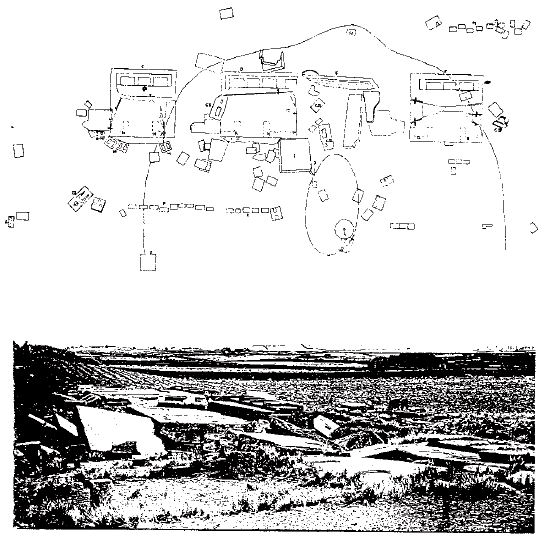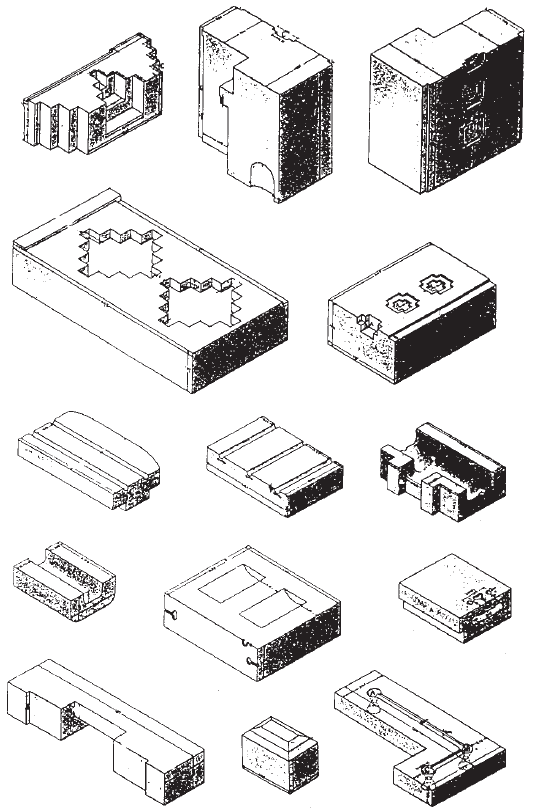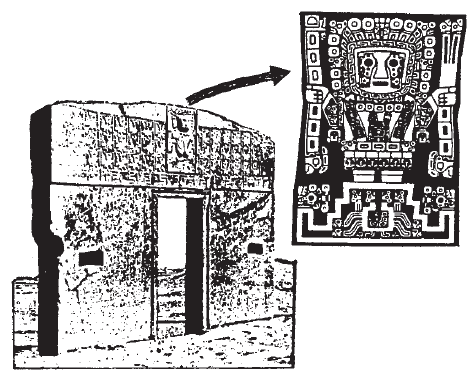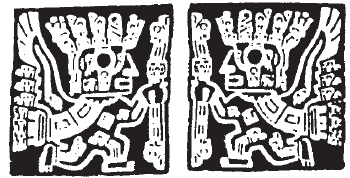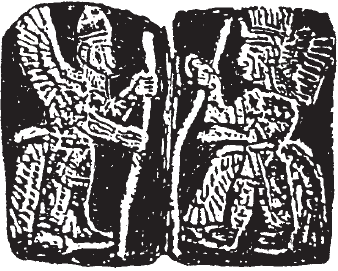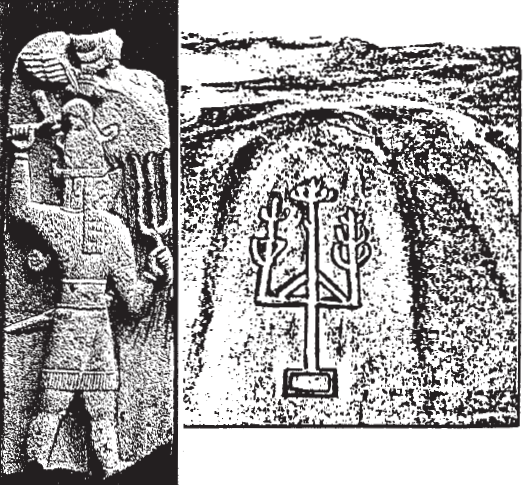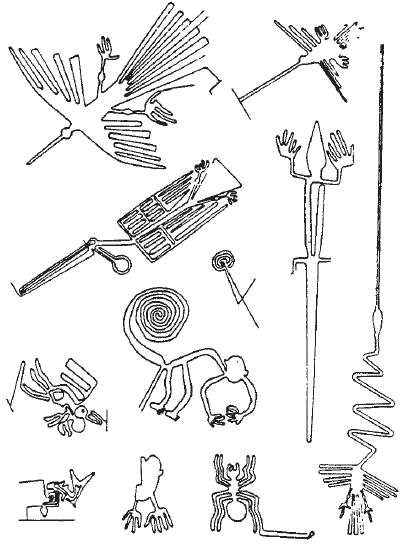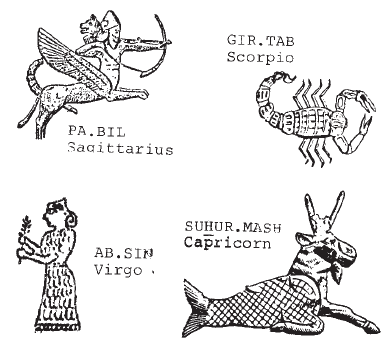|
Natural calamities and ever-intensifying catastrophes leave people wondering:
The correct answer is Yes and Yes, both in our own time as well as
in those ancient times. It is the condition of the present time, as
well as at a time more than four millennia ago; and the amazing
similarity is due to events in the middle time in between—the period
associated with the messianic fervor at the time of Jesus.
In all three instances, a
changed relationship between Man and God was central, except that
when, circa 2100 b.c.e., Mankind faced the first of these three
epochal upheavals, the relationship was between men and Gods, in the
plural. Whether that relationship has really changed, the reader
will soon discover.
But as I have shown in my book
The Twelfth
Planet, the ancient text is in fact a sophisticated cosmogony that
tells how a stray planet, passing by our solar system, collided with
a planet called Tiamat; the collision resulted in the creation of
Earth and its Moon, of the Asteroid Belt and comets, and in the
capture of the invader itself in a great elliptical orbit that takes
about 3,600 Earth-years to complete (Fig. 1).
Figure 1
But before we time-travel to
the momentous twenty-first century b.c.e., some pre-Diluvial and
post-Diluvial landmark events need to be recalled.
The
earlier Sumerian sources of the tale ascribe the disaffection with
Mankind to the God Enlil, and the counter effort to save Mankind to
the God Enki. What the Bible glossed over for the sake of Monotheism
was not just the disagreement between Enlil and Enki, but a rivalry
and a conflict between two clans of Anunnaki that dominated the
course of subsequent events on Earth.
The unavoidable resentment on the part of Enki and his maternal family was exacerbated by the fact that Anu’s accession to the throne was problematic to begin with: having lost out in a succession struggle to a rival named Alalu, he later usurped the throne in a coup d’état, forcing Alalu to flee Nibiru for his life. That not only backtracked Ea’s resentments to the days of his forebears, but also brought about other challenges to the leadership of Enlil, as told in the epic Tale of Anzu.
(For the tangled relationships of Nibiru’s
royal families and the ancestries of Anu and Antu, Enlil and Ea, see
The Lost Book of Enki.)
It was the biblical tale of the Patriarch Abraham explaining (Genesis 20:12) that he did not lie when he had presented his wife Sarah as his sister:
Not only was marrying a half-sister from a different mother permitted, but a son by her—in this case Isaac—became the Legal Heir and dynastic successor, rather than the Firstborn Ishmael, the son of the handmaiden Hagar.
(How such succession rules caused the bitter feud
between Ra’s divine descendants in Egypt, the half-brothers Osiris
and Seth who married the half-sisters Isis and Nephtys, is explained
in
The Wars of Gods and Men.)
The complex yet basic rule was this: Dynastic lines
continue through the male line; the Firstborn son is next in
succession; a half-sister could be taken as wife if she had a
different mother; and if a son by such a half-sister is later born,
that son—though not Firstborn—becomes the Legal Heir and the
dynastic successor.
With that in mind, the ancient text tells us, lots were drawn to determine who would stay on Earth and who would sit on Nibiru’s throne:
The result of drawing lots, then, was that Anu returned to Nibiru as its king.
Ea, given dominion over the seas and waters (in later times, “Poseidon” to the Greeks and “Neptune” to the Romans), was granted the epithet EN.KI (“Lord of Earth”) to soothe his feelings; but it was EN.LIL (“Lord of the Command”) who was put in overall charge:
Resentful or not,
Ea/Enki could not defy the rules of succession or the results of the
drawing of lots; and so the resentment, the anger at justice denied,
and a consuming determination to avenge injustices to his father and
forefathers and thus to himself led Enki’s son Marduk to take up the
fight.
Another vital facility was a spaceport, located at Sippar (“Bird City”). Nippur lay at the center of concentric circles at which the other “cities of the Gods” were located; all together they shaped out, for an arriving spacecraft, a landing corridor whose focal point was the Near East’s most visible topographic feature—the twin peaks of Mount Ararat (Fig. 2).
Figure 2 And then the Deluge “swept over the earth,” obliterated all the cities of the Gods with their Mission Control Center and Spaceport, and buried the Edin under millions of tons of mud and silt. Everything had to be done all over again—but much could no longer be the same.
First and foremost, it was necessary to create a new spaceport facility, with a new Mission Control Center and new Beacon-sites for a Landing Corridor.
The Deluge was a watershed (both literally and figuratively) in the affairs of both Gods and men, and in the relationship between the two: the Earthlings, who were fashioned to serve and work for the Gods were henceforth treated as junior partners on a devastated planet.
Figure 3
The new relationship between men and Gods was formulated, sanctified, and codified when Mankind was granted its first high civilization, in Mesopotamia, circa 3800 b.c.e.
The momentous event followed a state visit to Earth by Anu, not just as Nibiru’s ruler but also as the head of the pantheon, on Earth, of the ancient Gods.
Another (and probably the main) reason for his visit was the
establishment and affirmation of peace among the Gods themselves—a
live-and-let-live arrangement dividing the lands of the Old World
among the two principal Anunnaki clans, that of Enlil and that of
Enki— for the new post-Diluvial circumstances and the new location
of the space facilities required a new territorial division among
the Gods. It was a division that was reflected in the biblical Table of Nations (Genesis, chapter 10), in which the spread of Mankind, emanating from the three sons of Noah, was recorded by nationality and geography:
The
historical records show that the parallel division among the Gods
allotted the first two to the Enlilites, the third one to Enki and
his sons. The connecting Sinai peninsula, where the vital
post-Diluvial spaceport was located, was set aside as a neutral
Sacred Region.
A text known as the Epic of Etana tells us that,
In the First Region, the lands between the two rivers Euphrates and Tigris (Mesopotamia), Man’s first known high civilization, that of Sumer, was established. Where the prediluvial cities of the Gods had been, Cities of Man arose, each with its sacred precinct where a deity resided in his or her ziggurat—Enlil in Nippur, Ninmah in Shuruppak, Ninurta in Lagash, Nannar/Sin in Ur, Inanna/Ishtar in Uruk, Utu/ Shamash in Sippar, and so on.
In each such urban center an EN.SI, a “Righteous Shepherd”—initially a chosen demigod—was selected to govern the people in behalf of the Gods; his main assignment was to promulgate codes of justice and morality. In the sacred precinct, a priesthood overseen by a high priest served the God and his spouse, supervised the holiday celebrations, and handled the rites of offerings, sacrifices, and prayers to the Gods.
Art and
sculpture, music and dance, poetry and hymns, and above all writing
and recordkeeping flourished in the temples and extended to the
royal palace.
A Sumerian text dealing with the subject stated that before the symbols of Kingship (tiara/crown and scepter) and of Righteousness (the shepherd’s staff ) were granted to an earthly king, they “lay deposited before Anu in heaven.”
Indeed, the Sumerian word for Kingship was
Anuship.
Paramount was an ongoing conflict between Enki’s firstborn Marduk (Ra in Egypt) and Ningishzidda (Thoth in Egypt), a conflict that led to the exile of Thoth and a band of African followers to the New World (where he became known as Quetzalcóatl, the Winged Serpent). Marduk/Ra himself was punished and exiled when, opposing the marriage of his young brother Dumuzi to Enlil’s granddaughter Inanna/Ishtar, he caused his brother’s death.
It was as compensation
to Inanna/Ishtar that she was granted dominion over the Third Region
of civilization, that of the Indus Valley, circa 2900 b.c.e. It was
for good reason that the three civilizations—as was the spaceport in
the sacred region—were all centered on the 30th parallel north (Fig.
4).
Figure 4
But as one looks back on that
seemingly “golden age” in the affairs of Gods and men, it becomes
evident that the affairs of the Gods constantly dominated and
determined the affairs of Men and the fate of Mankind. Overshadowing
all was the determination of Marduk/Ra to undo the injustice done to
his father Ea/ Enki, when under the succession rules of the Anunnaki
not Enki but Enlil was declared the Legal Heir of their father Anu,
the ruler on their home planet Nibiru.
Figure 5
In time Marduk/Ra faced conflicts
even
with other brothers and half-brothers of his, in addition to the
conflict with Thoth that we have already mentioned—principally with
Enki’s son Nergal, who married a granddaughter of Enlil named
Ereshkigal. In the course of these struggles, the conflicts at times flared up to full-fledged wars between the two divine clans; some of those wars are called “The Pyramid Wars” in my book The Wars of Gods and Men.
In one notable instance the fighting led to the burying alive
of Marduk inside the Great Pyramid; in another, it led to its
capture by Ninurta. Marduk was also exiled more than once—both as
punishment and as a self-imposed absence. His persistent efforts to
attain the status to which he believed he was entitled included the
event recorded in the Bible as the Tower of Babel incident; but in
the end, after numerous frustrations, success came only when Earth
and Heaven were aligned with the Messianic Clock.
It was the need
to determine the exact time when each such month began and ended
(and not in order to enable peasants to know when to sow or harvest,
as schoolbooks explain) that led to the introduction of Mankind’s
first calendar in 3760 b.c.e. It is known as the Calendar of Nippur
because it was the task of its priests to determine the calendar’s
intricate timetable and to announce, for the whole land, the time of
the religious festivals. That calendar is still in use to this day
as the Jewish religious calendar, which, in a.d. 2007, numbers the
year as 5767.
Its central position, equidistant from the other functional centers in the E.DIN (see Fig. 2), was also deemed to be equidistant from the “four corners of the Earth” and gave it the nickname “Navel of the Earth.”
A hymn to Enlil referred to Nippur and its functions thus:
(The term “the Four Corners of the Earth” is also found in the
Bible; and when Jerusalem replaced Nippur as Mission Control Center
after the Deluge, it too was nicknamed the Navel of the Earth.)
In the Calendar of Nippur,
the year began on the day of the Spring Equinox and it has so
remained in the ensuing calendars of the ancient Near East. That
determined the time of the most important festival of the year—the
New Year festival, an event that lasted ten days, during which
detailed and canonized rituals had to be followed.
And, as at Stonehenge, long-term observations revealed that the group of stars (“constellation”) in the background has not remained the same (Fig. 6); there, the alignment stone called the “Heel Stone” that points to sunrise on solstice day nowadays, pointed originally to sunrise circa 2000 b.c.e.
Figure 6 The phenomenon, called Precession of the Equinoxes or just Precession, results from the fact that as the Earth completes one annual orbit around the Sun, it does not return to the same exact celestial spot. There is a slight, very slight retardation; it amounts to one degree (out of 360 in the circle) in 72 years.
It was Enki who first grouped the stars observable from Earth into “constellations,” and divided the heavens in which the Earth circled the sun into twelve parts—what has since been called the Zodiacal Circle of constellations (Fig. 7). Since each twelfth part of the circle occupied 30 degrees of the celestial arc, the retardation or Precessional shift from one Zodiacal House to another lasted (mathematically) 2,160 years (72 × 30), and a complete zodiacal cycle lasted 25,920 years (2,160 × 12).
The approximate dates of the Zodiacal Ages—following the equal twelve-part division and not actual astronomical observations—have been added here for the reader’s guidance.
Figure 7 That this was the achievement from a time preceding Mankind’s civilizations is attested to by the fact that a zodiacal calendar was applied to Enki’s first stays on Earth (when the first two zodiacal houses were named in his honor).
That this was not the achievement of a Greek astronomer (Hipparchus) in the third century b.c.e. (as most textbooks still suggest), is attested by the fact that the twelve zodiacal houses were known to the Sumerians millennia earlier by names (Fig. 8) and depictions (Fig. 9) that we use to this day.
Figure 8
Having come from Nibiru, whose orbital period, the SAR, meant 3,600 (Earth-) years, that unit was naturally the first calendrical yardstick of the Anunnaki even on the fast-orbiting Earth. Indeed, the texts dealing with their early days on Earth, such as the Sumerian King Lists, designated the periods of this or that leader’s time on Earth in terms of Sars.
I termed this Divine Time.
The calendar granted to Mankind, one based on the orbital aspects of the Earth (and its Moon), was named Earthly Time. Pointing out that the 2,160-year zodiacal shift (less than a year for the Anunnaki) offered them a better ratio—the “golden ratio” of 10:6—between the two extremes; I called this Celestial Time.
Figure 9 As Marduk discovered, that Celestial Time was the “clock” by which his destiny was to be determined.
The quandary, as we shall see, baffled mankind in antiquity; it
still lies at the core of the current Return issue. The question
that is posed has been asked before—by Babylonian and Assyrian
stargazing priests, by biblical Prophets, in the Book of Daniel, in
the Revelation of St. John the Divine, by the likes of Sir Isaac
Newton, by all of us today.
Let us embark on the painstaking quest.
|

